---------------------------------------------------------
M Worm, or Meningeal Worm is a parasite most US & southern Canadian alpaca owners need to be aware of. The effects of this parasite can cause paralysis or death in alpacas, but there are steps you can take to keep your herd safe.
The story of the meningeal worm
The meningeal worm’s natural host is the white tail deer. It rarely causes issues for the deer. The worm will live & reproduce inside the deer. The way meningeal worms make it from deer to alpaca is a pretty interesting nature story. The worms generally take up residence in the subdural spaces of the deer’s brain. When their larvae hatch, they burrow into the circulatory system of the deer, eventually making their way to the lungs. The deer cough the larvae up, and then swallow them where they enter the digestive system. The larvae are then excreted in the deer feces.
Slugs & snails enjoy feasting on the mucous-y coating of deer feces, while they are feasting, the m worm larvae burrow into the gastropod’s feet. The larvae grow inside the slug or snail hoping to be consumed by a deer. If the slug or snail gets consumed by a deer (usually accidentally while they graze on grass), the worm’s lifecycle begins again. They burrow into the central nervous system through the walls of the digestive tract and make their way to the deer’s brain where they grow to adulthood. If they get too big to continue living inside the slug or snail and aren’t eaten, they will be excreted into the slime trails the gastropod leaves behind. M worms can only live & reproduce inside white tail deer. In other species, they never mature, just migrate through the various systems wreaking havoc.
When an alpaca eats m worm larvae
Because the alpaca is not the preferred host for the larvae, it can not continue its life cycle inside of the alpaca. It will not be able to mature to adulthood or lay eggs. BUT it will be able to wander aimlessly inside the alpaca causing all kinds of issues. The larvae will be ingested by the alpaca, either by the alpaca accidentally eating an infected slug or snail while grazing or the alpaca will eat some grass that has infected slime trails on it. This releases the larvae into the digestive tract. They will then make their way to the spinal cord and continue on through the central nervous system as they aimlessly migrate.
As you might expect having larvae migrating around your central nervous system and spinal cord is going to result in neurological issues. Left unresolved, the damage can be permeant or can even result in the death of the alpaca.
Symptoms of an M Worm Infection in Alpacas
In the beginning stages the symptoms will be subtle,
- a loss of or change in coordination
- unusual bodily movements
- behavioral changes
As the infection progresses (1-2 months after infection)
- stiffness
- head tilt
- poor coordination
- difficulty walking
- reluctance to rise from cushing
- arching neck
- circling
- weakness in rear legs
If not treated, as the infection proceeds (2-3 months after infection, at this stage prognosis for recovery is poor)
- refusal to rise from cushing
- weakness/paralysis in all legs
- blindness
- seizures
- spinal cord lesions
- depression/weight loss
- death
Obviously, the sooner you catch an infection and the sooner you begin treatment, the better the prognosis. If caught early, your alpaca could make a full recovery. In later stages, partial recovery may still be possible but lingering coordination issues, stiffness, or blindness could be permeant due to scarring of brain or spinal tissues. It has been shown that as few as 5 larvae can cause 100% morbidity and 67% mortality.
Unfortunately, many alpaca’s m worm infections are not caught early, often because as prey animals, alpacas are excellent at hiding illness. This is an important reason to spend time every day observing your animals. Keep an eye on their movements and behaviors and act quickly when things seem out of the ordinary.
Treatment for meningeal worm
The first step in treating meningeal worm should be to contact your camelid vet. They will be able to monitor and help develop treatment and advice on how to deal with any long term side effects. The typical treatment would be fenbendazole (Safeguard) at 50mg/kg orally for 5 days, but your vet might also recommend a combination of NSAIDs, Ivermectin, vitamin E, B vitamin complex, and fluid or physical therapies depending on the symptoms and severity of your alpaca’s infestation. This is not a disease you want to fool around with – call the vet and do it ASAP.
Preventing M Worm in your Herd
Preventing meningeal worm infections is much easier and less heartbreaking than dealing with an infection. White tail deer are prevalent in most of the United States (particularly the northeast) and in southern Canada. If you live in an area with white tail deer, your alpacas could be at risk.
The first line of protection is monthly preventative injections. 1.5 to 2 cc of 1% ivermectin per 100 pounds body weight, injected under the skin, every 4 weeks. These injections should be administered year round. For about $2.50 per month per alpaca, it’s the cheapest & best protection you can provide against m worm for your herd.
Other prevention methods include
Surround your paddock with deer-proof fencing. This can be challenging because deer can jump really high! To truly keep deer out you would need a woven fence of about 12 feet. Keeping deer out is a good first step, but you would also need to minimize snail & slug activity. They could have crawled in through the fencing or been dropped there by a bird or other animal.
Snails & slugs like moist environments. Low lying & poorly drained fields provide ideal habitats for them. They also like to live in piles of organic matter like leaf piles, grass cuttings, or long grass. Keep the barn areas and paddock clear of debris. Fix drainage issues so you don’t have swampy areas. You can also add a barrier of gravel around your fields as a deterrent for snails out of the pasture.
Introduce a slug and snail predator. Most poultry, especially ducks, absolutely love to eat them! click here to read more about raising ducks . The ducks get to have a tasty treat while keeping your alpacas safe. M worms can not survive inside the duck so they are not at risk of infestation. Plus my alpacas love having the chickens & ducks free ranging around them. In return, the presence of the alpacas deters hawks & eagles from swooping in to grab the chickens & ducks. Everyone is happy!
Further reading
Want to read more about keeping your alpacas healthy & protected from m. worm? Check out this article from our friends at alpaca-shearing.com
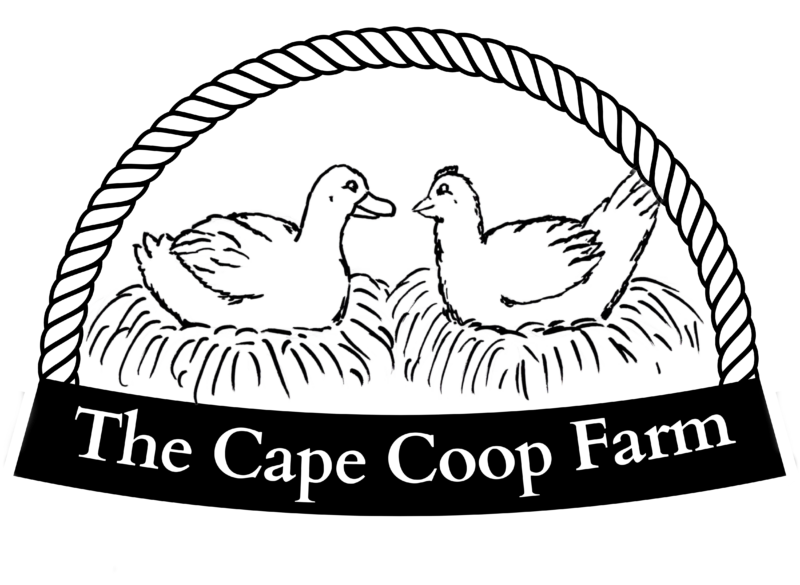
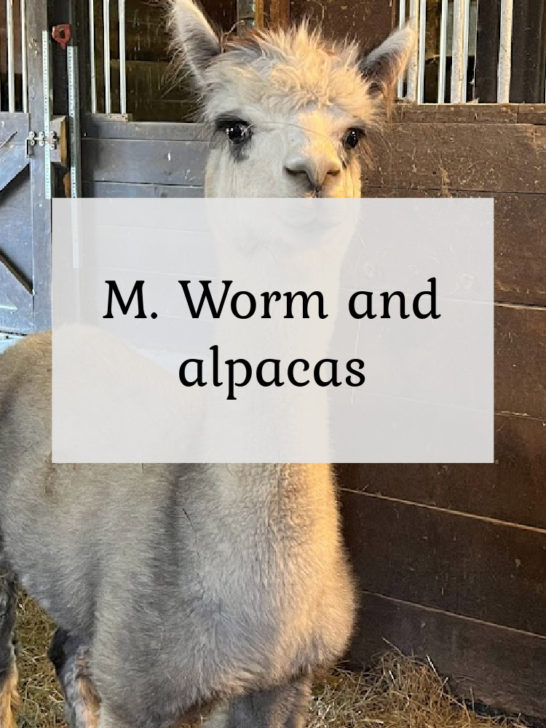

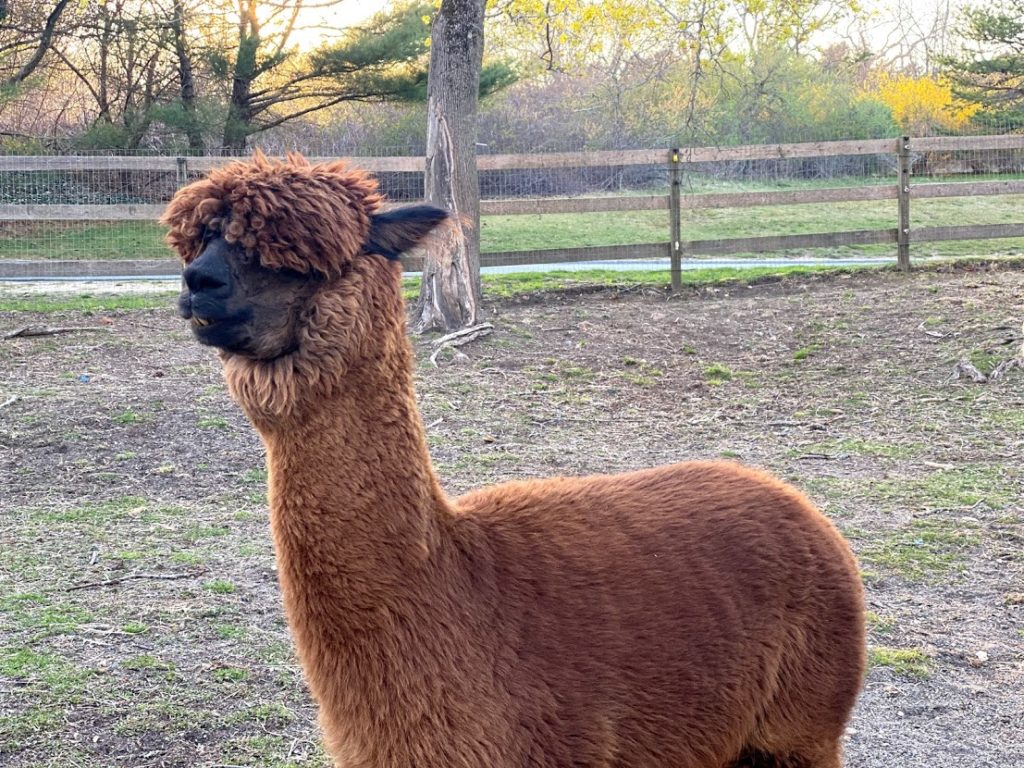
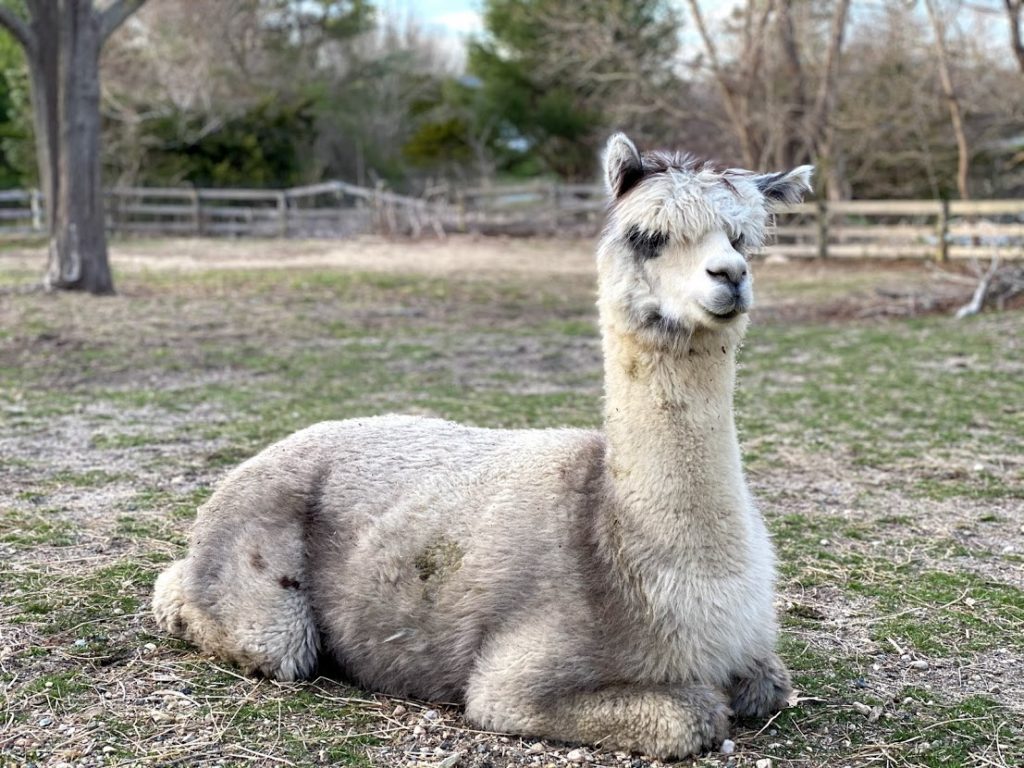
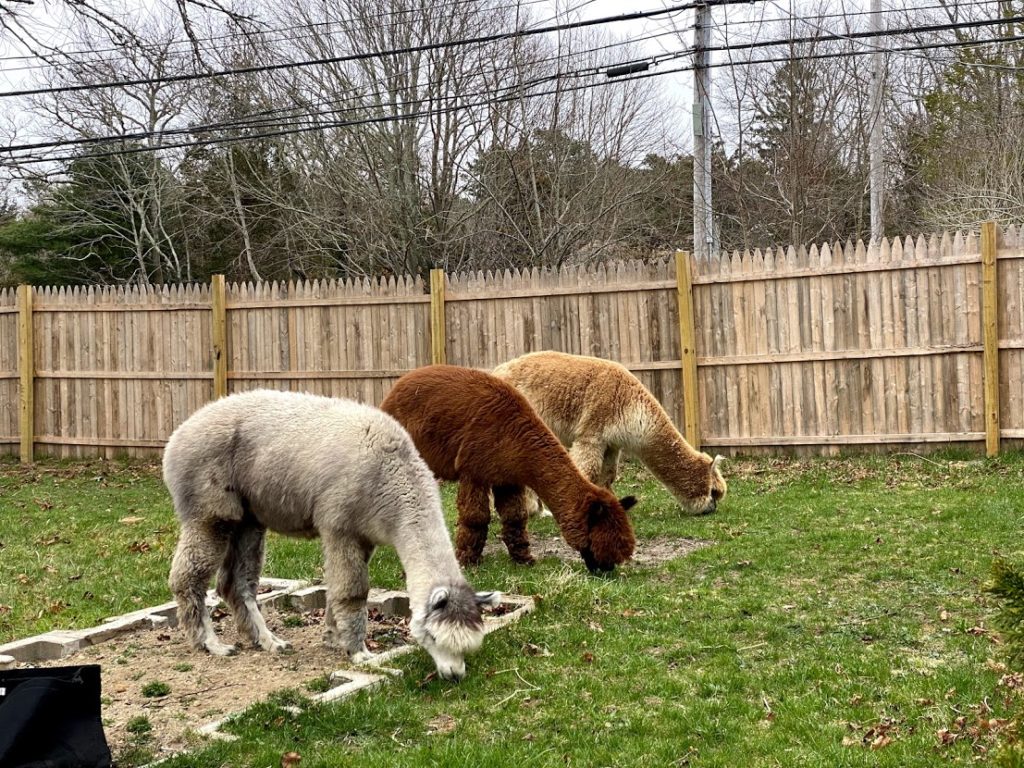
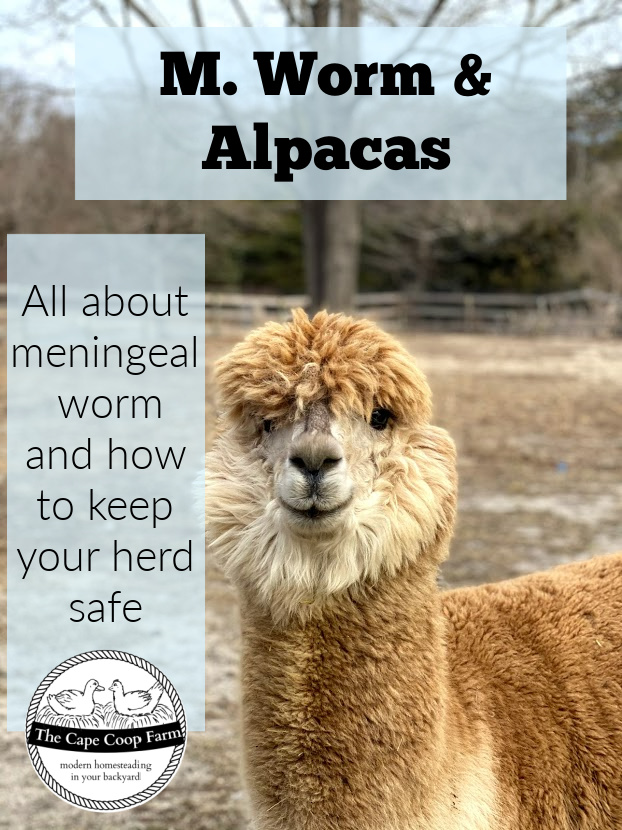
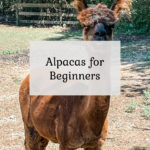
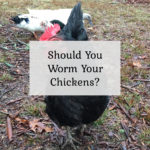
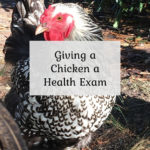
Julie Leishman
Monday 3rd of October 2022
Hello, I may be interested in perhaps an Alpaca, I am wondering what the cost might be for the vet bills per year/month, as well the approximate cost for food? Thank you
Liz
Monday 3rd of October 2022
This is going to vary a lot according to where you live and how much you want to do yourself. Our vet annual exam with vaccines is about $110 per alpaca. They are pretty hardy animals but accidents & illness happen so that could obviously make your vet bills go way up. We live in an area with M Worm so we have to give them monthly shots. We do them ourselves so it's just the cost of the meds & syringes which is only about $2.50 month, if you don't want to or can't give shots you will have to pay someone to do this for you. They need their toe nails trimmed every couple of months. Alpacas are about 170 pounds and if you aren't comfortable handling an animal that large you will need to have a hoof & nail professional come out every other month to do it for you. This usually costs me $25-$30 per alpaca, but you can certainly learn to do it yourself. Something you should always have a professional do for you (unless you are really experienced) is the annual shearing. They are really big animals and a professional shearer will make the job quick and as stress free as possible. At the same time the shearer will usually trim the alpaca's teeth and clip their nails. This usually runs me about $70-$80 per alpaca including a tip (this happens once a year). Alpacas will need pellet feed and either lots of fresh quality grass for grazing or hay. If you have huge grassy meadows that can be grazed year round your hay budget might be close to nothing. I live where there are harsh winters and don't have unlimited grazing space so we need to buy hay pretty much year round. I would say on average each alpaca goes through 1/2 bale of hay per month in summer to a whole bale per alpaca in the winter. We spend about $275-$300 per year on alpaca feed & hay. So as a very rough estimate in a year that has no major medical issues each alpaca costs us about $550-$650 to feed & care for. Other things to consider are that alpacas should never live alone, the minimum you should keep are 3 alpacas. Then of course you will need to provide shelter and fencing for grazing